Install
While QGIS is probably the most popular free open-source Geographic Information System (GIS) software widely used in the geospatial industry and education, LAStools is probably the fastest and most efficient point cloud data processing software for LiDAR datasets. Therefore, it is useful to bring these powerful software components together. Therefore, the QGIS community and rapidlasso have developed a LAStools plugin for QGIS. This article describes the installation of the plugin.
Install QGIS
First download and install QGIS on your computer.
Install LAStools
If you are not using LAStools yet: Get the latest version of LAStools by downloading the installation package.
Unzip the package to a folder on your hard drive. Make sure your pathname doesn’t contain spaces or non-ASCII characters. It is recommended not to install inside the „C:\Program Files“ folder due to write limitations and space character in this folder name. The recommended installation folder is „C:\LAStools“.
Configure QGIS
Start QGIS and select „Plugins“ | „Manage and Install Plugins…“.
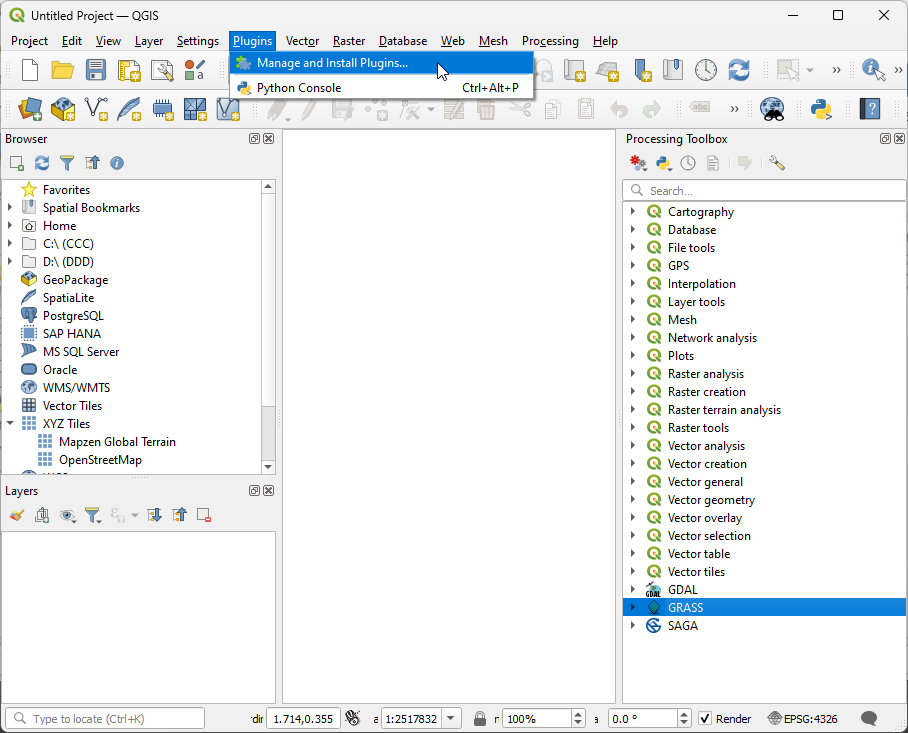
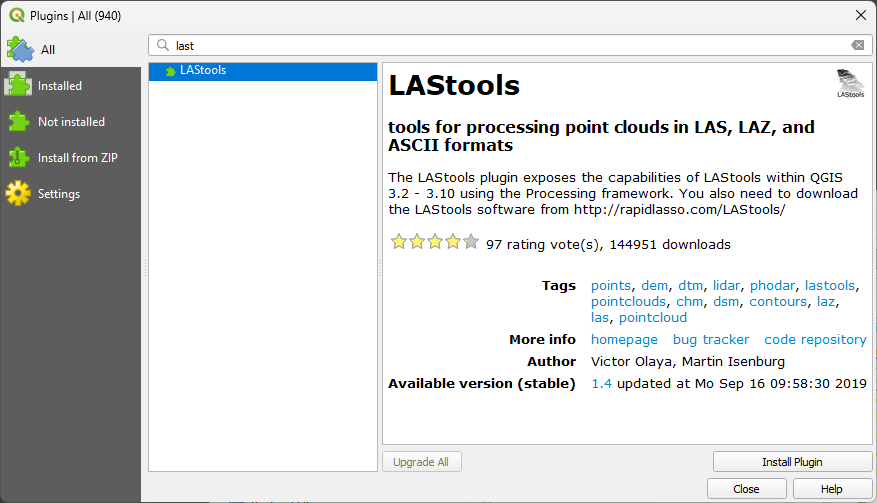
Type „last“ in the search box at the top. Select „LAStools“ out of the list and click „Install Plugin“.
Select „Processing“ | „Toolbox“ in the main menu.
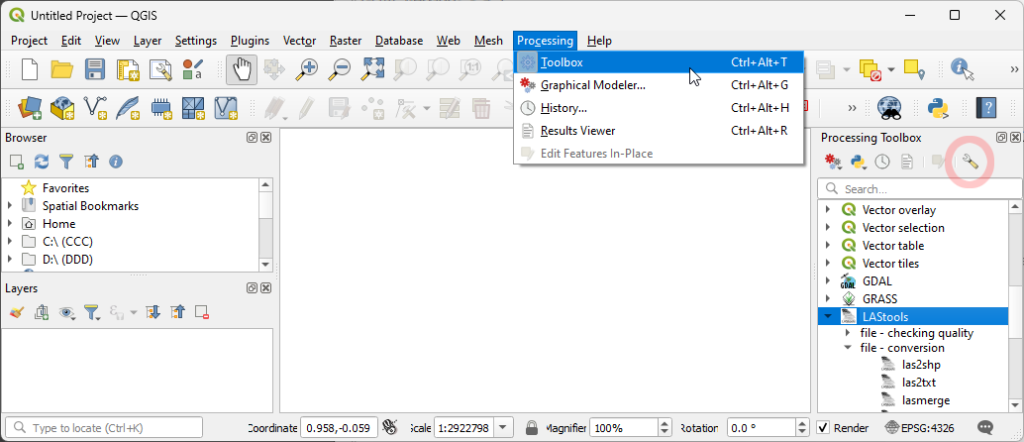
The processing toolbox will be shown on the right. A new item „LAStools“ should be shown in the list.
Click the Options Icon at the top of the list.
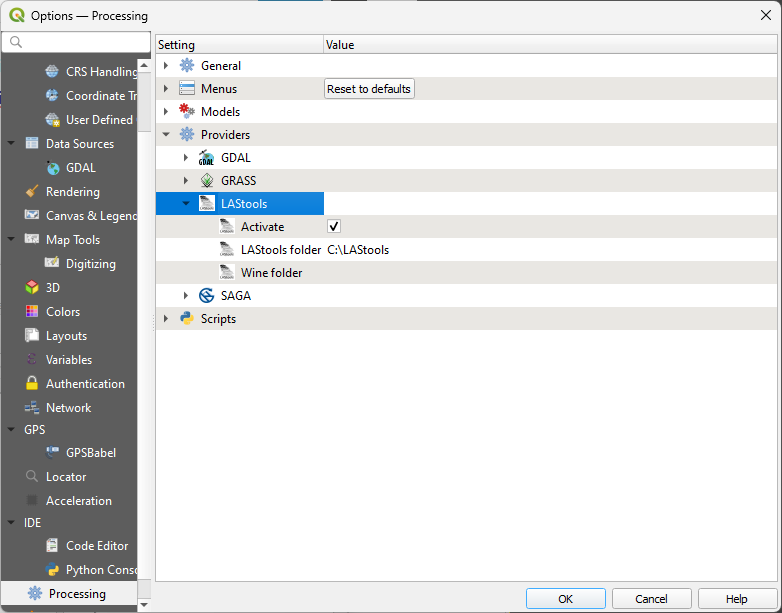
If you installed LAStools in a folder other than the default folder, select „Providers“ | „LAStools“ from the tree view and double-click on the edit field behind „LAStools folder“. Enter the path where you installed LAStools. Make sure the pathname does not contain non-ASCII characters, spaces, or invalid filename characters. On Linux or Windows, LAStools runs by specifying the LAStools installation folder. On macOS, you can use LAStools with the Wine Windows emulator. Simply enter the full emulator path/name in the „Wine folder“ field, e.g., „/opt/homebrew/bin/wine.“
Running LAStools within QGIS
To perform a LiDAR data operation in QGIS with LAStools, simply double-click a tool item and a parameters dialog box will appear. Enter input and output parameters and press „Run“ to run the tool. For information about an individual tool, see the readme files in your LAStools installation in the „.\bin“ directory, e.g., under „C:\LAStools\bin“. Performing individual LAStools operations within QGIS is easy and intuitive. You can unleash the full power of QGIS and LAStools by using the tools within a Python script („Advanced“ > „Copy as Python command“) or by „Run as batch process…“.
See the QGIS documentation for more information.
The plugin is a Python wrapper for the LAStools native command line interface. If you have simple tasks to do, you can also just run LAStools from the command line. If you have complex workflows, you can run them in a batch file outside of QGIS. The power of the plugin is the option to allow integration of LAStools with other QGIS workflows and processes.
Troubleshooting
99% of all problems with the plugin result in an invalid installation path or an invalid filename/filepath of a file to be processed. Therefore, make sure that your installation path, your path to your file, and your filename itself contain only standard filename characters from the ASCII charset. Avoid funky chars like „öäüß“ and spaces.
Support
If something doesn’t work as expected, extract your problem to the lowest level first. If calling a tool is part of a large script, extract the single process into a standalone operation. If a tool is called using very long file and path names, reduce these to very short names. If the problem persists, contact us.
Always include the log output as additional information with your problem description. Important: Do not output the log output as a screenshot, but as copy-paste text from the log window.
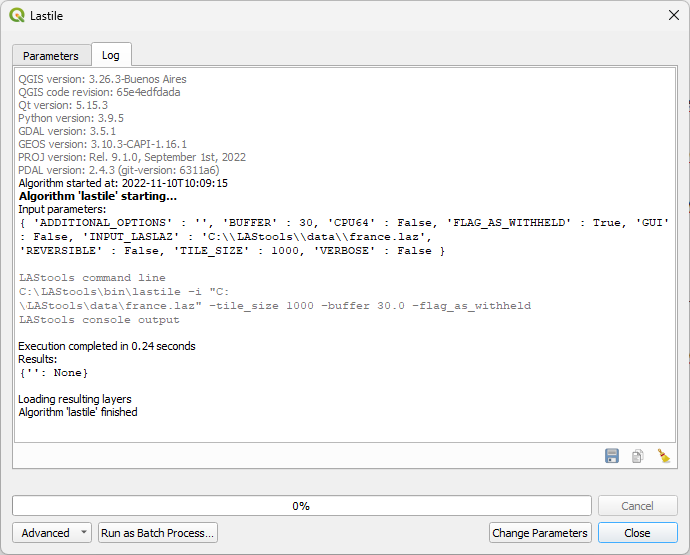
Kindly follow our general rules to submit a support request. We will get back to you as soon as possible.
